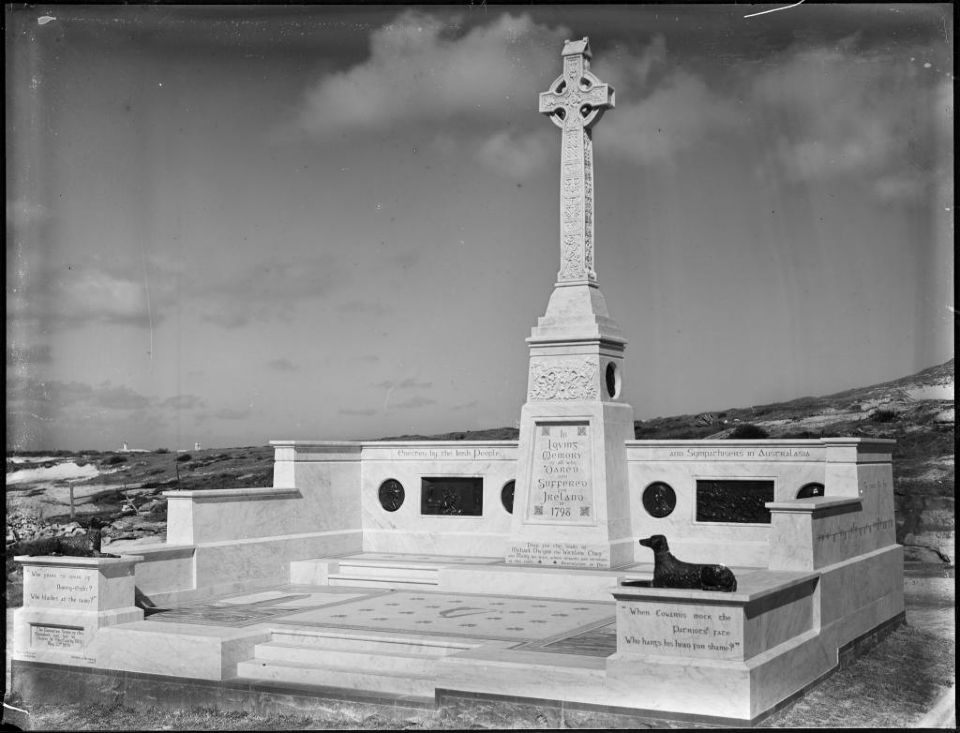Bronte, Sydney --- As places go for resting through all eternity, this is one of the better located.
The cemetery seems to tumble down towards the blue ocean. And on this day the sky is reflecting the ocean, that being the Pacific.
Waverly Cemetery spreads up and down, this way and that, on bluffs overlooking the water in the Sydney suburb of Bronte.
There are a fair few Irish here. Some of them were made residents before their time.
In one spot there is a row of gravestones that appear to tell a very sad story, that of Irish immigrants arriving in Australia on a ship, but just not quite making it.
The Memorial as it looks today.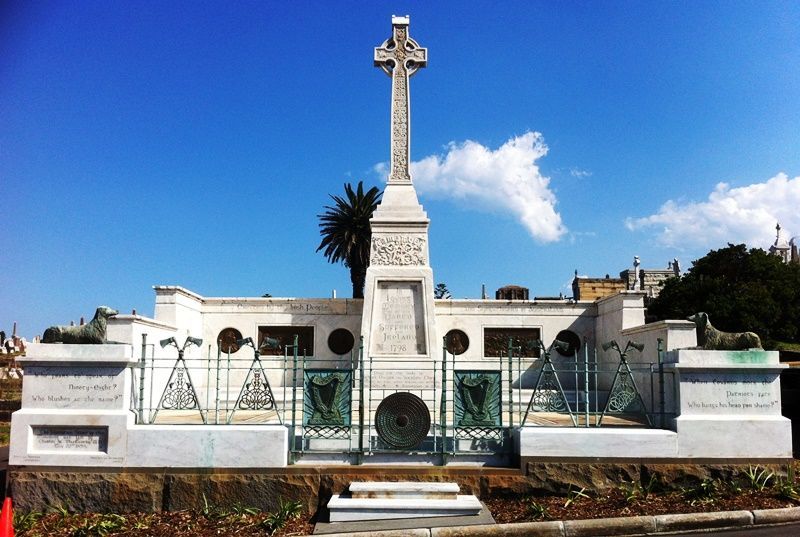
Perhaps it was typhus or some such killer aliment. But whatever it was it did for these brave souls who, as irony would have it, now reside in a very desirable neighborhood where once there was, not too far away, the notorious penal colony of Botany Bay.
Cemeteries are fascinating places, preserved repositories of history and also countless individual and family stories.
Some of my most memorable stories covered in the years at the Echo have been centered on cemeteries. One was the rededication of the grave in Calvary Cemetery Queens of Annie Moore.
Another took form on a morning when the wind blew cold and bitter off New York Harbor and up the rising slope to Green-Wood Cemetery in Brooklyn where a huddled group of press, history buffs and cemetery officials stood on a small hill with a view to restoring to the public record the life and final resting place of William “Bill the Butcher” Poole, portrayed so vividly by Daniel Day Lewis (as the fictional William Cutting) in the “The Gangs of New York.”
Green-Wood is a treasure trove if you see treasure in headstones. Theobald Wolfe Tone’s widow Matilda is buried there. She died in March 1849 and was interred in Green-Wood only a few years before Bill the Butcher arrived courtesy of the immigrant Irish New Yorkers he so despised during his short life.
A peaceful evening scene with Bronte in the background.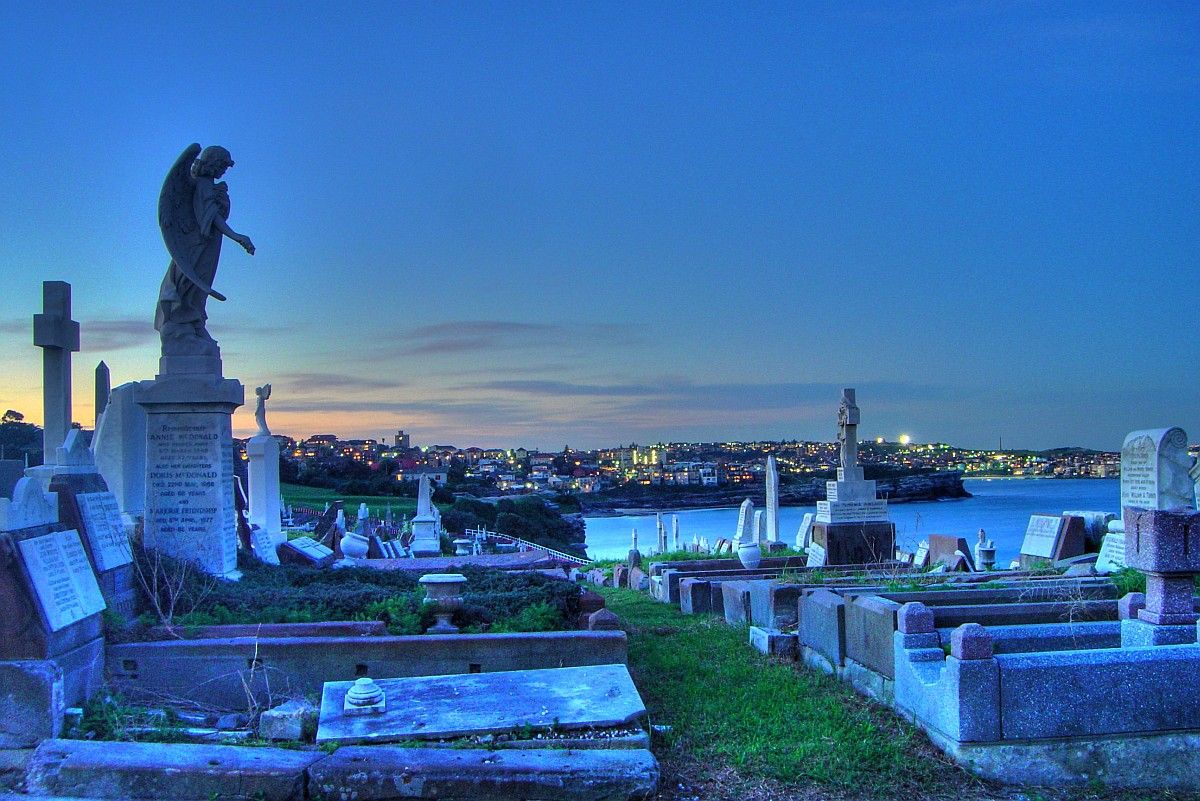
Across on the other side of the world Waverley Cemetery includes an eclectic range of, well, residents, beneath its heritage-listed ground.
It is, according to a Wikipedia entry, regularly cited as being one of the most beautiful cemeteries in the world.
This is immediately apparent to the visitor.
What is also apparent in the heart of the cemetery and away from the water is a memorial to an event on the other side of the world, though this time not America.
Waverly can lay claim to the largest memorial anywhere to the 1798 Rebellion in Ireland.
The base of the memorial is thirty feet wide while it is 24 feet deep. The rear wall is ten feet high. The centerpiece of the memorial is a thirty foot high Celtic Cross.
The main building material is Carrara marble which originates in Italy and is used the world over in buildings and monuments.
The rear wall is decorated with bronze plaques and the floor has mosaic pictures of thatched cottages and round towers.
Michael Dwyer.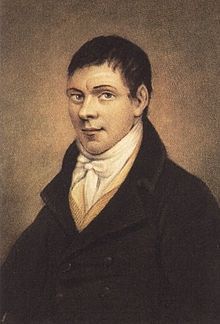
On the rear wall are 76 names of men and women, priests and ministers, who took part in the 1798 uprising.
Below them are the names, added in 1947, of those who were executed after the 1916 Rising. In 1994, the Irish National Association, to whose care the monument is entrusted, placed a plaque behind the monument to commemorate the 1981 hunger strikers.
The monument is dedicated to those "Who dared and suffered for Ireland.”
The online Dictionary of Sydney carries a description of the memorial by Michael O'Sullivan, who described it as the finest 1798 memorial in the world.
It’s interesting indeed to consider the fact that this monument to Irish defiance was built at a time when Australia was still under British rule. It was, perhaps, a sign of change to come.
The memorial isn’t just an edifice. It’s also the resting place of one of the leaders of the United Irishmen rebellion, Michael Dwyer. Dwyer died in Sydney in 1825. This was pre-Waverly but in 1898, as a salute to the centenary of 1798, Dwyer’s remains and those of his wife, Mary, were moved to Waverly.
Dwyer, “the Wicklow Chief,” fought under General Joseph Holt in battles at Arklow, Vinegar Hill, Ballyellis and Hacketstown.
After the rebellion ended in defeat for the Irish rebels, Dwyer maintained a virtual guerrilla war against the British from his mountainous Wicklow base.
Dwyer would join forces with Robert Emmet but would again end up on the losing side. Nevertheless, he continued his campaign from familiar Wicklow ground.
Every headstone tells a story.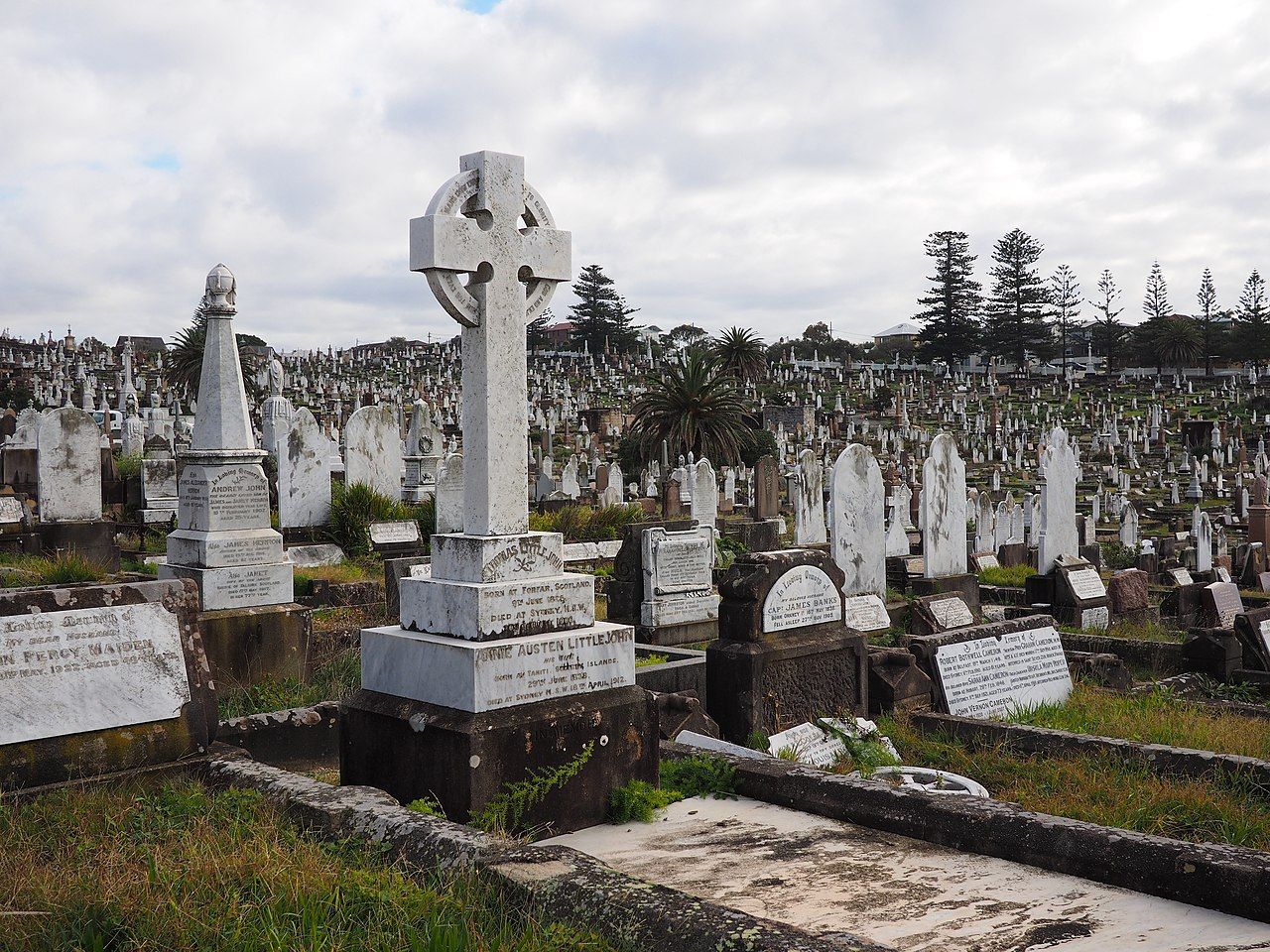
In December 1803, Dwyer finally capitulated on terms that would allow him safe passage to America but the government reneged on the agreement, holding him in Kilmainham Jail until August 1805, when they transported him to New South Wales.
Dwyer arrived in Sydney on February, 14, 1806 on the Tellicherry and was given free settler status. He was accompanied by his wife Mary and their eldest children and also by his companions, Hugh “Vesty” Byrne and Martin Burke, along with Arthur Devlin and John Mernagh.
He was given a grant of a hundred of land on Cabramatta Creek in Sydney. Although he had originally hoped to be sent to America, Dwyer was later quoted as saying that "all Irish will be free in this new country" (Australia).
This statement had been used against him and he was arrested in February, 1807 and imprisoned. On May 11, 1807, Dwyer was charged with conspiring to mount an Irish insurrection against British rule.
An Irish convict stated in court that Dwyer had plans to march on the seat of government in Australia, at Parramatta. Dwyer did not deny that he had said that all Irish would be free but he did deny the charges of organizing an Irish insurrection in Sydney.
Dwyer had the powerful support of Australia's first Jewish policeman, John Harris, who expressed the opinion in court that he did not believe that Dwyer was organizing a rebellion against the government. On May, 18, 1807 Dwyer was found not guilty of the charges of organizing an Irish insurrection in Sydney.
Governor William Bligh disregarded the first trial acquittal of Dwyer. Bligh, who regarded the Irish and many other nationalities with contempt, organized another trial for Dwyer in which he was stripped of his free settler status and transported to Van Diemens Land (Tasmania) and Norfolk Island.
This was Bligh of the “Mutiny on the Bounty” and also the Bligh, who during his Royal Navy career, was tasked with charting the waters of Dublin Bay so as to make easier passage for shipping. After Bligh was overthrown in the Rum Rebellion in 1808, the new governor of New South Wales, George Johnston, who was present at Dwyer's acquittal in the first trial, ordered that Dwyer's freedom be reinstated.
Dwyer was later to become chief of police (1813–1820) in Liverpool, New South Wales but was dismissed in October for drunken conduct and mislaying important documents.
In December, 1822 he was sued for aggrandizing his by now 620 acre farm. Bankrupted, he was forced to sell off most of his assets, which included a tavern called The Harrow Inn. This did not save him from several weeks’ incarceration in the Sydney debtors' prison in May, 1825. Here he evidently contracted dysentery, to which he succumbed in August. Huge crowds attended his funeral.
Originally interred at Liverpool, his remains were reburied in the Devonshire Street Cemetery, Sydney in 1878, by his grandson John Dwyer, dean of St Mary's Cathedral. In May, 1898 the coincidence of the planned closure of the cemetery and centenary celebrations for the 1798 rebellion suggested the second re-interment of Dwyer and his wife in Waverley Cemetery, where the 1798 memorial was erected in 1900.
Michael O’Sullivan takes up the tale: “With the approach of the centenary of 1798, the Sydney Irish decided to find a conspicuous resting place for the Wicklow Chief. They paid £50 for a plot of ground at Waverley Cemetery.
“They could have obtained one for free in Rookwood Cemetery, but it would not have been in such a marvelous position overlooking the sea. Under the leadership of Dr. Charles William MacCarthy, they engaged John Hennessy of Sheerin & Hennessy architects to draw up a plan for a memorial to place over his tomb.
On Holy Thursday, 19 May 1898, the vault at Devonshire Street Cemetery was opened to remove the bodies of Michael and Mary Dwyer. The two coffins were placed in a large cedar casket and brought to St. Mary's Cathedral on Saturday night, 21 May. At 2 p.m. on Easter Sunday the casket was taken to Waverley Cemetery in the largest funeral Sydney had seen up to that time. The casket was placed in a vault and Dr. MacCarthy laid the foundation stone of the monument to be built over it. The completed monument was opened on Easter Sunday 1900.”
Dwyer had seven children and has numerous descendants throughout Australia.
But Dwyer’s resting place doesn’t need relatives to guard it day and night. That task is undertaken, symbolically of course, by two sculpted Irish Wolfhounds, one at each side of the marble monument to the centuries-long struggle, on the other side of the world, for Irish freedom.

